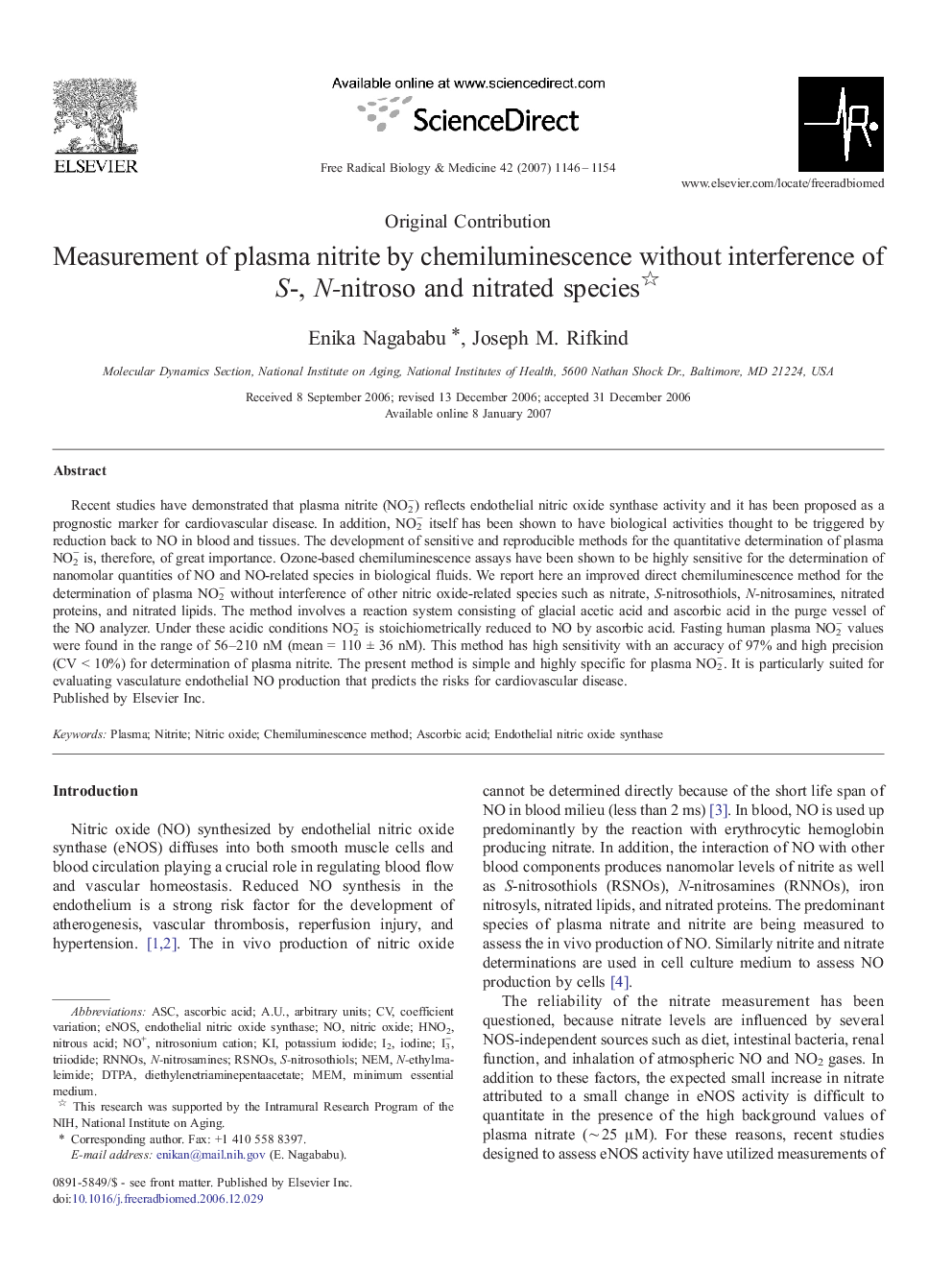| Article ID | Journal | Published Year | Pages | File Type |
|---|---|---|---|---|
| 1911436 | Free Radical Biology and Medicine | 2007 | 9 Pages |
Abstract
Recent studies have demonstrated that plasma nitrite (NO2â) reflects endothelial nitric oxide synthase activity and it has been proposed as a prognostic marker for cardiovascular disease. In addition, NO2â itself has been shown to have biological activities thought to be triggered by reduction back to NO in blood and tissues. The development of sensitive and reproducible methods for the quantitative determination of plasma NO2â is, therefore, of great importance. Ozone-based chemiluminescence assays have been shown to be highly sensitive for the determination of nanomolar quantities of NO and NO-related species in biological fluids. We report here an improved direct chemiluminescence method for the determination of plasma NO2â without interference of other nitric oxide-related species such as nitrate, S-nitrosothiols, N-nitrosamines, nitrated proteins, and nitrated lipids. The method involves a reaction system consisting of glacial acetic acid and ascorbic acid in the purge vessel of the NO analyzer. Under these acidic conditions NO2â is stoichiometrically reduced to NO by ascorbic acid. Fasting human plasma NO2â values were found in the range of 56-210 nM (mean = 110 ± 36 nM). This method has high sensitivity with an accuracy of 97% and high precision (CV < 10%) for determination of plasma nitrite. The present method is simple and highly specific for plasma NO2â. It is particularly suited for evaluating vasculature endothelial NO production that predicts the risks for cardiovascular disease.
Keywords
DTPAHNO2RSNOsTriiodideASCN-ethylmaleimideS-nitrosothiolsA.U.eNOSNO+Ascorbic acidNitrous acidcoefficient variationminimum essential mediumdiethylenetriaminepentaacetateendothelial nitric oxide synthaseMEMNEMN-NitrosaminesNitriteNitric oxidearbitrary unitsPlasmaNitrosonium cationIodinepotassium iodide
Related Topics
Life Sciences
Biochemistry, Genetics and Molecular Biology
Ageing
Authors
Enika Nagababu, Joseph M. Rifkind,
